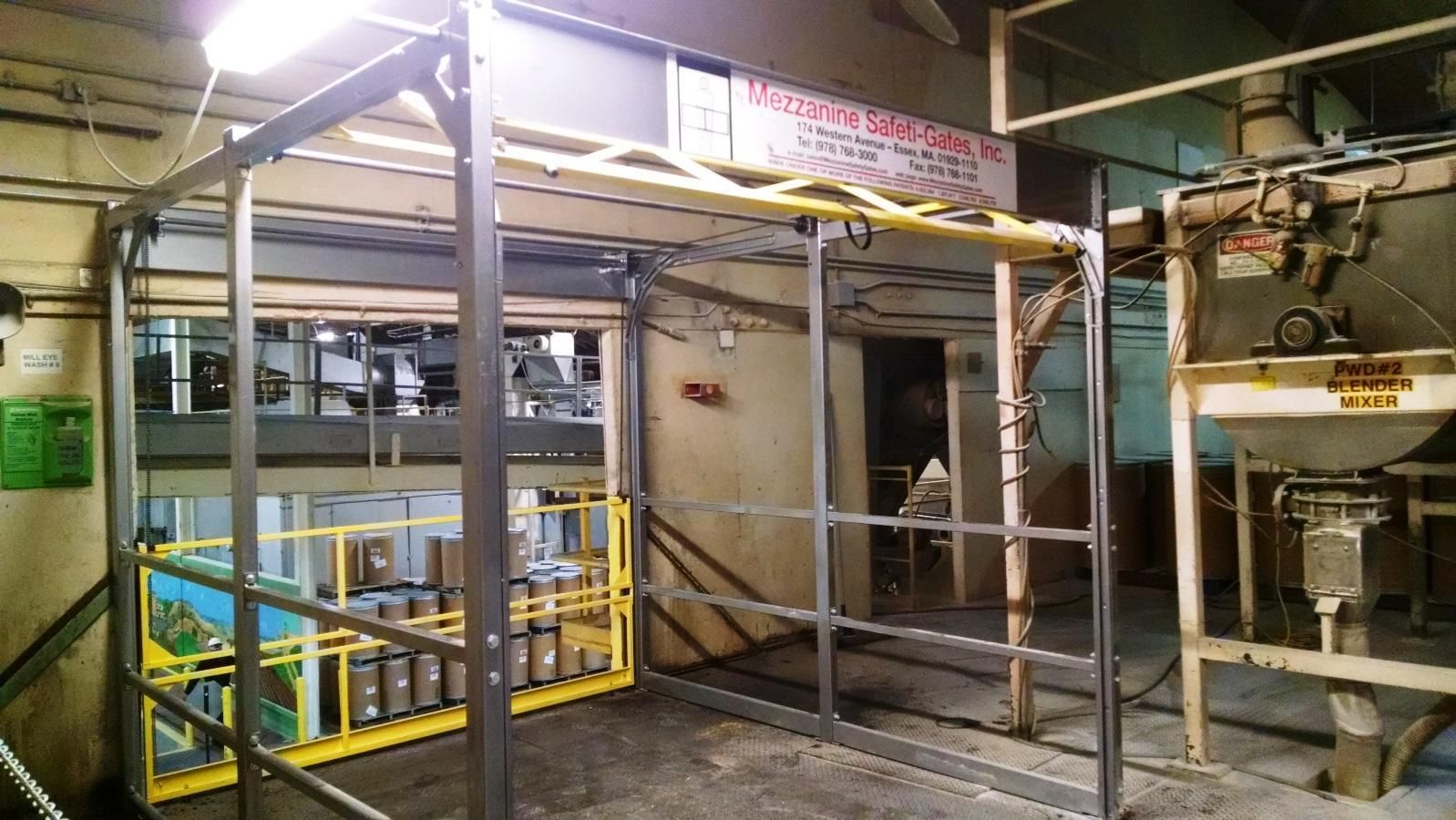
The Key to OSHA Compliance: ANSI
Safety regulations from the Occupational Safety and Health Administration (OSHA) can be difficult to navigate; have you sat down and tried to read through the code that pertains to elevated platforms or pallet drop areas? It can be difficult to determine which of the codes apply to that application.
When trying to determine the best practice for safety in a facility, ensuring compliance with the proper OSHA codes is mandatory. But, even though those codes are confusing, there is an easy way to ensure you will meet the code: consult the American National Standards Institute (ANSI) first.
ANSI, unlike OSHA, is very specific on the environment it addresses. And although the ANSI creates voluntary regulations, these regulations do meet OSHA codes, so if you follow an ANSI standard then you are following the OSHA code, and in compliance.
To illustrate the challenges of navigating the standards, here’s a look at the process to secure a pallet drop area on an elevated work platform or mezzanine:
When it comes to facility safety, many companies start by reviewing OSHA Walking-Working Surface regulations because they are mandatory. To determine how to secure this area you would go to OSHA's Walking-Working Surface Regulations, 1910 Subpart D. This code covers a wide range of fall related hazards and does not specifically address a pallet drop area. It can also create some ambiguity around when the safety gate or guarding can be open, as well as when a kick plate is required.
Companies may also consult ANSI’s MH 28.3-2009 Specification for the Design, Manufacture, and Installation of Industrial Steel Work Platforms. In this standard, section 6.4.3 specifically addresses pallet drop areas and advises that an opening in the guardrail used for loading and unloading material should be designed so there is a barrier in place at all times. This standard details the configuration and strength requirements of the barrier. It also outlines kick plate requirements clearly as well as rejects the use of specific safety devices, including swing and sliding gates.
By reading this ANSI standard, one will quickly learn how to secure the pallet drop area. Where the OSHA code may have created some questions about the specific safety requirements in a pallet drop area, ANSI clearly outlines the best practice for this specific environment. And again, ANSI can not recommend a practice that is in violation of OSHA code so if you follow ANSI standards, then you are meeting the necessary OSHA regulations.
So, what does the standard tell us about best practices for facility safety? ANSI clearly states that single barrier systems such as swing, sliding or lift-out gates used for protection on elevated platforms DO NOT meet the standard. The same goes for removable railings or nettings. While these are easy systems to install, none of these safety barriers provide the level of protection needed when it comes to fall protection for employees.
Only a dual-gate safety system meets ANSI standards; a barrier is in place even during the activity of loading and unloading material. This type of system is key because it’s pretty foolproof: when the rear-side gate is up, employees can access the workstation with a pallet or other materials while the ledge-side gate is down, creating a barrier on the ledge. When the ledge-side gate is up, allowing the workstation to be replenished or material removed, the rear-side gate is down, blocking employee access to the exposed ledge.
Like OSHA, we believe the safety of employees is not a voluntary matter; it’s imperative to ensure that safety systems are in place to prevent falls, as human capital is one business’s most important assets. If you are confused about complying with OSHA regulations, be sure to review the corresponding ANSI standards as they are more specific and easier to understand. After review, if you have questions or need to replace a barrier safety system to meet ANSI standards, please give us a call; we can help ensure you meet the standards and are keeping employees safe.